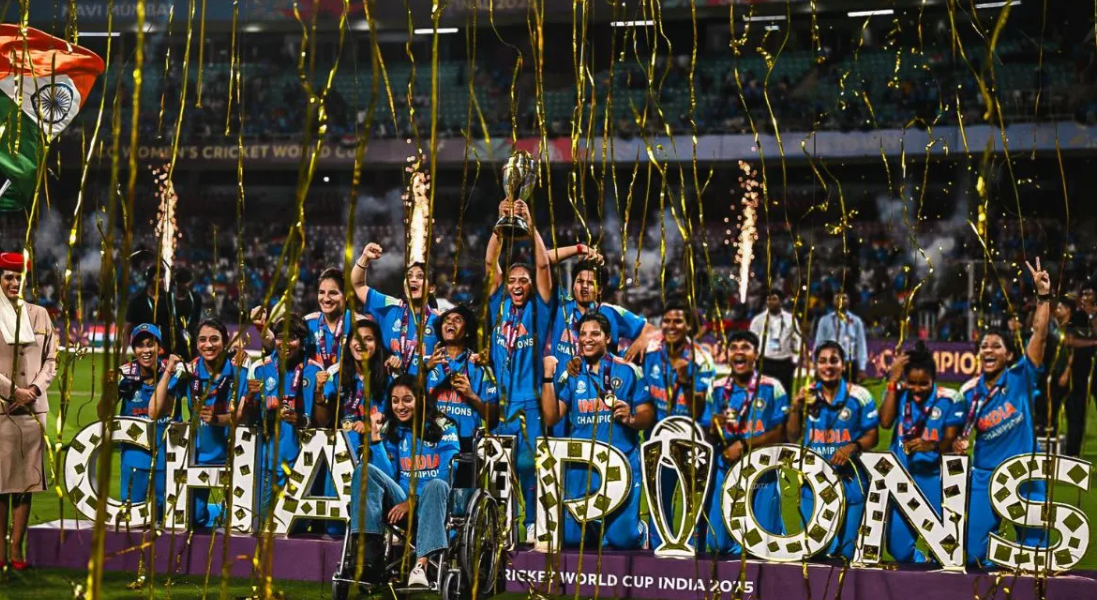Not many would perhaps know even today, despite women’s one day cricket being in existence for over 52 years that the first ever ICC Cricket World Cup (50 overs, i.e., limited overs cricket) wasn’t the men’s event; rather the women’s one day international World Cup. That was 1973. The hosts and winners were England. And somehow it is forgotten, call it convenience to neglect the women’s game, as has often been the case or just the way our minds are that we forget that the maiden ICC Men’s ODI World Cup happened in two years after women had already excelled in the ecstatic competition, in 1975. And yet, so much of our cricket obsessed minds still hover around the men’s game attaching to it a sense of exclusivity as if the sport was and still is just about them. Could this brazen ignorance, if one could call it so be because we haven’t really been exposed to the Women’s game or the fault of the storekeepers of the sport; the administrators; those tasked to run it, who may not have done a lot to promote the sport? Gladly, today, a lot is being done and happens for the women’s sport than was back in the day. It’s not just salubrious marketing campaigns; it’s the involvement of past legends in broadcast journalism coupled with high standards of the sport’ presentation, it being televised and when not, then being streamed around the world so as to increase its accessibility to the fan. In the present day, and the purist couldn’t be happier, a lot more is being done and avidly so. There’s more influx of commerce, which may or may not have been the case back in the day and there’s been a greater awareness about the Women’s game in that it no longer needs altruist acts exclusively, whether from the spectacular men who have excelled in cricket and voiced their support for it. Where the present day is concerned, Women’s cricket stands at-
1) A captivating melange of multiple white-ball formats
2) A restoration of the Ashes (in a way that there’s an Ashes series happening more often than not today than was the case before)
3) Greater influx of franchise-based competitions (Women’s Big Bash League having turned a huge corner for the sport, thank god for “Straya!”
4) Importantly, greater participation in the sport itself (an Austria too has a team, so does Brazil and Namibia and France, to quote an example)
And one is glad, no gleeful actually, that each of these pivots are blended with great marketing campaigns and the way the sport is consumed today, whether on hand held gadgets or on traditional TV sets with hardcore fans sitting together on the couch to enjoy it, that has led to a sea-change that can be ‘seen and enjoyed’ just the way men’s cricket is.
Also Read | Shubman Gill Captaincy Record in All Formats
Today, you are aware of not just an Ellyse Perry, but of Phoebe Litchfield, the scorer of the great semi’s century versus India. You are aware of Renuka Thakur leaving her home to pursue cricket as a 13-year-old as well as of Andrea-Mae Zapeda, perhaps a colossus that could be for her Austrian team. You know and regard Chaya Mughal and her ceaseless contributions towards the UAE Women’s team and at the same time, you know that while Rahul Dravid was- and will be- the Mr. Dependable of Men’s cricket, there’ll always be Mithali Raj- a figure of immensity- yes, of greatness and poise- where it comes to not just Indian team, but the women’s sport, in itself. You will be reminded whenever they’ll talk of fast bowling, of not just the legendary Jhulan Goswami and what a story she has, but also of Katherine Brunt, the Sparta of England women’s cricket and of Megan Schutt, the fearless spark of Australia women’s team and also of, among many other pillars of the game, a certain Lea Tahuhu of the White Ferns, a team commandeered for the longest time, by a ‘Devine’ power . While there’s been the great smile of South Africa in Mignon du Preez, there’s also a been its thunder with the white ball; a bastion of pure passion called Shabnim Ismail. And then we have had a great statistical marvel of Pakistan cricket in the form of Nain Abidi, the first-ever scorer of a century in Women’s ODI cricket, a figure of honesty and straightforwardness for the ladies.
There’s so much to admire about the women’s game in its current conception that doesn’t only begin with lame and perhaps suggestive Google searches that say- “Smriti Mandhana’s best pictures or the cutest pictures of Ellyse Perry” (not that beauty and charisma cannot coexist on the 22 yards)- but even concerns itself with inspirational and much-needed narratives that take into consideration the growth of the women’s sport.
Having said that, the following is the year-wise ICC Women’s ODI World Cup winners, including host country and eventual winner:
| Year | Winner | Host |
| 1973 | England | England |
| 1978 | Australia (N/A points) | India |
| 1982 | Australia (3 wickets) | Australia |
| 1988 | Australia (8 wickets) | Australia |
| 1993 | England (67 runs) | England |
| 1997 | Australia (5 wickets) | India |
| 2000 | New Zealand (4 runs) | New Zealand |
| 2005 | Australia (98 runs) | South Africa |
| 2009 | England (by 4 wickets) | Australia |
| 2013 | Australia (by 114 runs) | India |
| 2017 | England (by 9 runs) | England |
| 2022 | Australia (by 71 runs) | New Zealand |
| 2025 | India (52 runs) | India |

